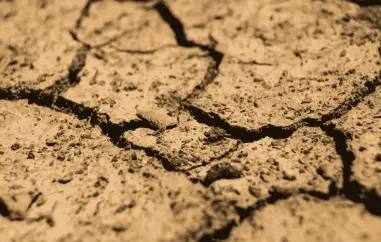Sicily Faces Environmental Crisis as Drought Threatens Agricultural Sector
 Sicily, known for its picturesque landscapes and vibrant tourist attractions, is grappling with a severe environmental crisis. A lack of rainfall during the winter has pushed the region into a state of drought, prompting the regional government to declare a natural disaster. The dire situation has raised concerns among experts, as Sicily becomes one of the few regions in Europe in the red drought zone.
Sicily, known for its picturesque landscapes and vibrant tourist attractions, is grappling with a severe environmental crisis. A lack of rainfall during the winter has pushed the region into a state of drought, prompting the regional government to declare a natural disaster. The dire situation has raised concerns among experts, as Sicily becomes one of the few regions in Europe in the red drought zone.
Agriculture Councilor Luca Sammartino, advocating for urgent action, successfully influenced the regional government, led by President Renato Schifani, to declare a state of natural disaster in mid-February. Sicily's water resources have reached critical levels, making it the only region in Italy facing such a predicament. This places the island in a weather situation comparable to that of Morocco and Algeria.
The preceding year witnessed scorching temperatures and minimal rainfall, leading to forest fires persisting until late autumn. The second half of 2023 marked the driest period in over a century for Sicily, with a significant precipitation deficit. In December alone, some areas recorded a rainfall deficit of up to 96 percent, exacerbating the water scarcity issue.
Livestock breeders are among the severely affected, struggling with a shortage of hay for their animals. Additionally, citrus fruit production is dwindling due to heat and insufficient rainfall, resulting in increased production costs. The agricultural sector is grappling with a substantial decline in grape production, with regional averages dropping by over 40 percent and reaching 70 percent in the province of Trapani.
Agriculture Councilor Sammartino acknowledges the gravity of the situation, emphasizing the need for measures to support and protect the agricultural and livestock sectors. A crisis team has been established to address the water shortage crisis.
The situation in Sicily is further exacerbated by projections from the Greenway and Ecogest Climate Change Study Center, indicating an anticipated increase in surface temperature and sea level rise by 2050. The ongoing warming process poses a significant threat, with a risk of desertification on 70 percent of the island's territory.
In response to the water scarcity in agriculture, authorities granted permission in mid-February to use water from the Arancio reservoir for irrigation. This decision comes after a ban on the use of the dam's water for agriculture last year due to the presence of red algae, considered poisonous. However, recent samples show red algae contamination persisting, raising concerns about potential health risks for both humans and animals.
As Sicily grapples with the impact of the ongoing drought, the environmental crisis has sparked a desperate fight for water, highlighting the urgent need for sustainable solutions to safeguard the region's agricultural future.
Image by Luis Iranzo Navarro Olivares from Pixabay









































